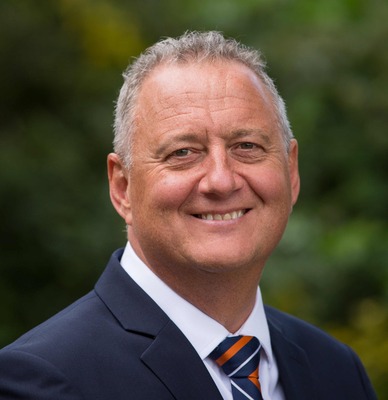
“The technology exists but how long before it is a reality?”

By Mark Lee, Managing Director, Piller UK Limited
Data centre power requirements are entering a new era. And this is not going unnoticed outside the sector.
Anyone in the industry will have spotted news stories in the national media about AI and the demand for power such as “Electricity grids creak as AI demands soar” and “Data centre power use ‘to surge six-fold in 10 years‘ says UK National Grid CEO.”
This is a global issue. Current forecasts point a doubling of electricity consumption by data centres within just four years. The International Energy Agency compares the 1000-terawatt hours of power that could be used by data centres across the world by 2026 to the ‘electricity consumption of Japan,’ a country of 125 million people.
This power capacity need must be met somehow, and it appears there is much head scratching going on in the energy sectors of every territory, and across the data centre space about exactly where this additional power capacity will come from.
That data centres are seeking power at new scale, think 500MW to even 1GW for a single campus, just at a time when aging power grids are already stressed is adding to the concerns.
The world’s power grids vary in age, stability and carbon intensity. Of these the island of Great Britain (Northern Ireland sits on a single all Ireland grid) has one of the world’s most stable and cleanest power grids. But even here there are concerns that a vast expansion is required.
This has huge implications for the data centre industry’s ability to meet the technical and business challenges to deliver AI. Of those two sets of challenges, it could be argued that that interacting with traditional power networks present more complex issues than the technical challenges of onsite power generation, conditioning, storage and microgrid distribution. Viable solutions for gas engine grid independent on-site power generation already exist and are widely used in other sectors (see below).
The current mood of the data centre market is excitement about growth prospects and the level of investment coming into the market. According to international law firm Linklaters “In the first five months of 2024, $22bn was invested globally in data centres.”
The view of the market is that there is, and will be, a severe lack of grid power availability and that this is stopping or stalling new developments.
Amid fierce competition for suitable development sites in places like the UK excitement about new projects (there is land and fibre available) is tempered by the question: ‘Where is the power?’
The current situation
So, what is the realistic prospect of seeing an independently powered large scale data centre being built in the UK in the next few years? How could such a site be developed?
Across the data centre sector there is much discussion at industry conferences and in the press about onsite power generation. This raises the question about how close we are to seeing facilities running on their own power and what that means for data centre developments and planning?
It is reasonable to expect that the first off grid facilities could be operational in the next three years.
Developers are not standing still and there is talk that negotiations of Power Purchase Agreements with suppliers to run islanded colocation facilities of 120MVA have started.
Already colo companies looking to develop in the UK are evaluating on site gas engine power generation and CHP (combined heat and power). To date there are UK CHP projects have been hampered by a lack of grid capacity. Microgrid developments are viewed as a solution to this. CHP and microgrids should also make data centre developments more appealing for local government planning departments.
The concept of demand response, where data centres operating independently can couple and feed power into the grid at various times is gaining traction. For example, Google has said “By building out a new approach for demand response across our data centers — and paving the way for others to do the same — we are helping unlock these important grid-level benefits.” Demand response will come to the UK, but it is not yet clear how quickly and in what form this will happen.
Already there are colocation companies in the UK evaluating gas generation and fuel cells to power their infrastructure.
One complexity that must be considered is how to handle fault current. With the major upgrade works being undertaken across the National Grid Transmission infrastructure to increase capacity, this also has the potential to increase the fault current. This issue is further compounded by upgrade works undertaken by the distribution network operators who are increasing power capacities with full reverse capacity power through the substations.
Therefore, these upgrades are causing further fault current issues. While the distribution infrastructure is beginning to get the power distribution capacity required, any embedded generation connection agreement is blocked as it exceeds the fault limit of the switchgear until major renewals works are completed, potentially 10 years from now.
Where the Power lies
Data centre developments have hit front line politics with Rachel Reeves, the new UK Labour government’s Chancellor of the Exchequer (Finance Minister) citing data centre infrastructure and reform of planning law as critical to growing the country’s economy.
Already some projects that were denied planning permission look likely to be reconsidered with reports that “Deputy Prime Minister Angela Rayner” had “recovered two planning appeals for data centres in Buckinghamshire and Hertfordshire (already)”.
It seems clear that to have any realistic chance of meeting data centre capacity demand for AI, cloud and other digital services will require on-site power generation in some form or other. The development of Small Modular Reactor technology is an exciting prospect. But it is not the only on-site power option and there are many examples of sectors that operate by generating their own electricity and delivering it across
microgrids.
In some ways the data centre industry may emulate sectors such as mining and energy intensive manufacturing where use of large-scale onsite power generation infrastructure scaling to 300MWs – 500MW and even 1GW in blocks of 10MW engines, combined with huge alternators and power conditioning and stabilization technologies are not uncommon and have run for decades.
It seems certain that even in countries with mature, stable power grids, much of the next wave of data centre construction in places such as the UK and other advanced economies will be built around on-site power.
For further information contact: corporatecommunications@langleyholdings.com
About Piller
Piller power conditioning and backup technology can be found in major mission-critical power applications globally. For many of the world’s banks and financial institutions, governmental agencies, data centre operators, telecoms networks and airports, as well as hospitals, semiconductor and pharmaceutical manufacturers, Piller equipment is the go-to technology, earning the mantra Nothing protects quite like Piller. Piller was founded by Anton Piller in Hamburg in 1909. Today the company is headquartered in Osterode, near Hanover in Germany, with subsidiaries across Europe, in the USA, India, Singapore and Australia. The company employs around 1,000 people worldwide, the majority in Germany. In 2016 Piller acquired the Austin TX kinetic energy storage producer, Active Power Inc.
About Power Solutions
The Langley Holdings Power Solutions Division comprises Bergen Engines, the Norwegian medium-speed engine builder acquired from Rolls-Royce in December 2021; Marelli Motori, the Italian producer of electric motors and generators; Piller Group, Europe’s leading German producer of critical power conditioning, stabilisation and backup systems and GKN Hydrogen, the Italian Hydrogen Storage and Power-to-Power specialist, acquired 1st August 2024, In 2024, the Division will account for approximately half of the Group’s $1.5bn revenues and 5000+ employees.
